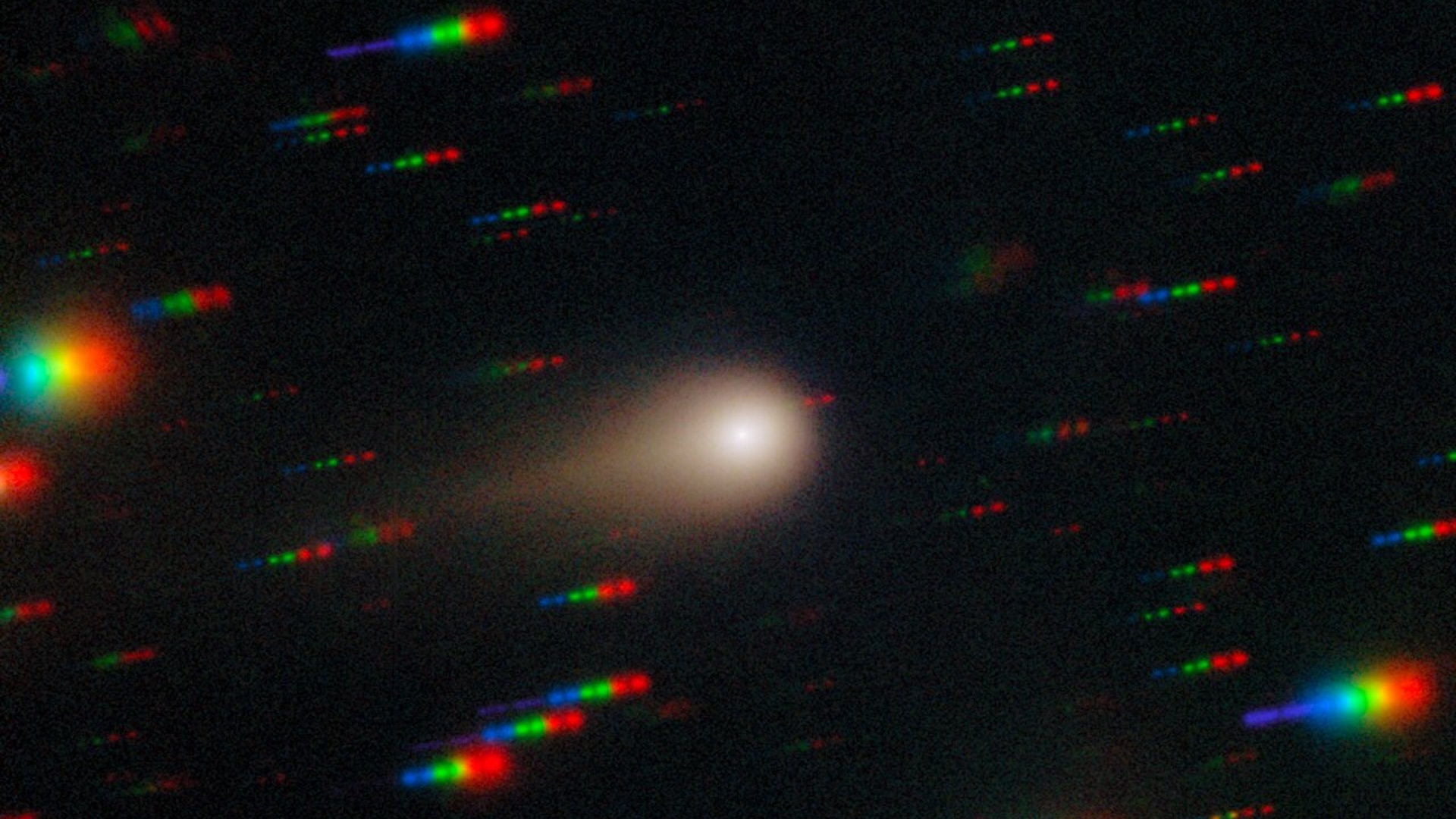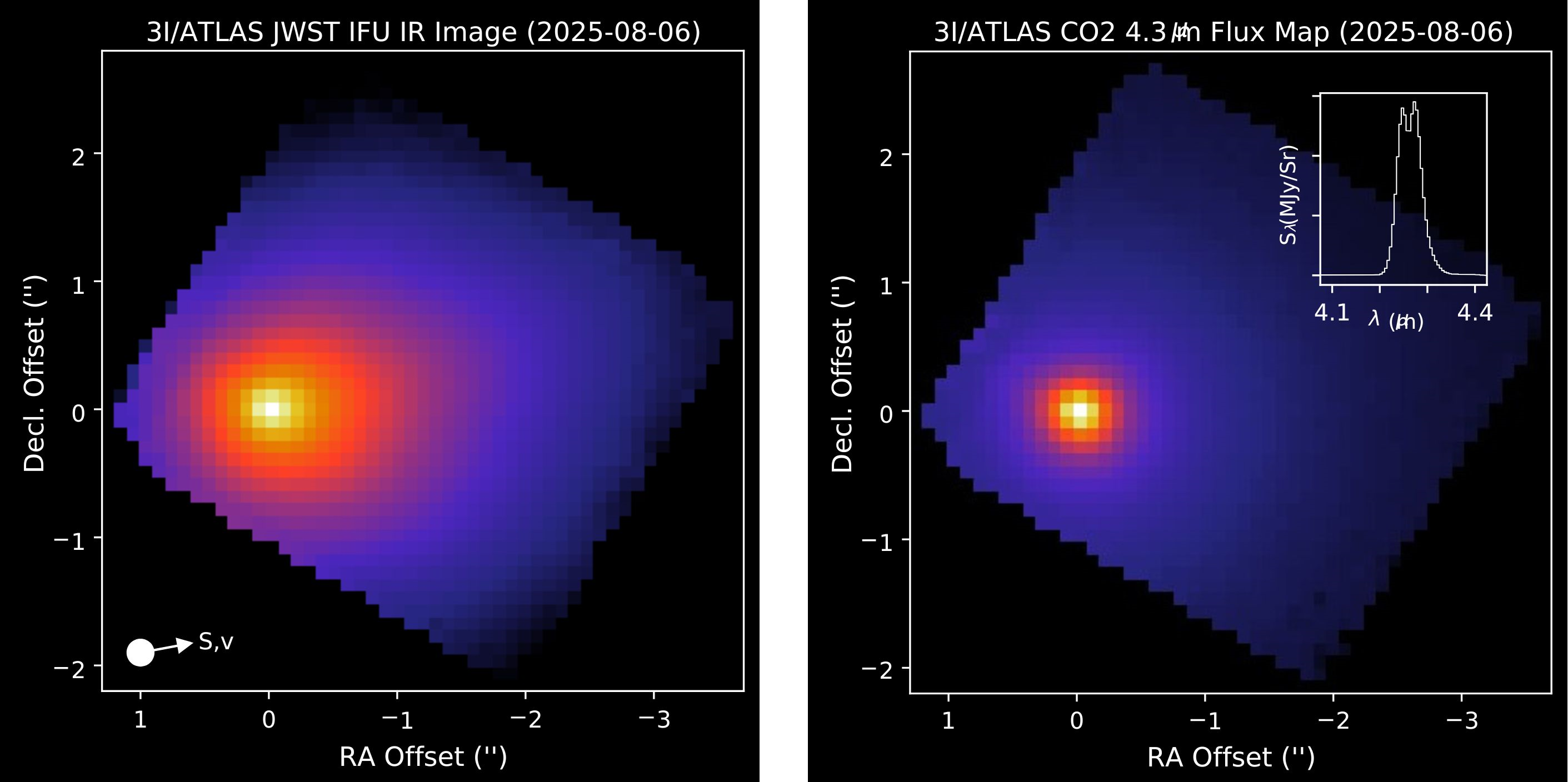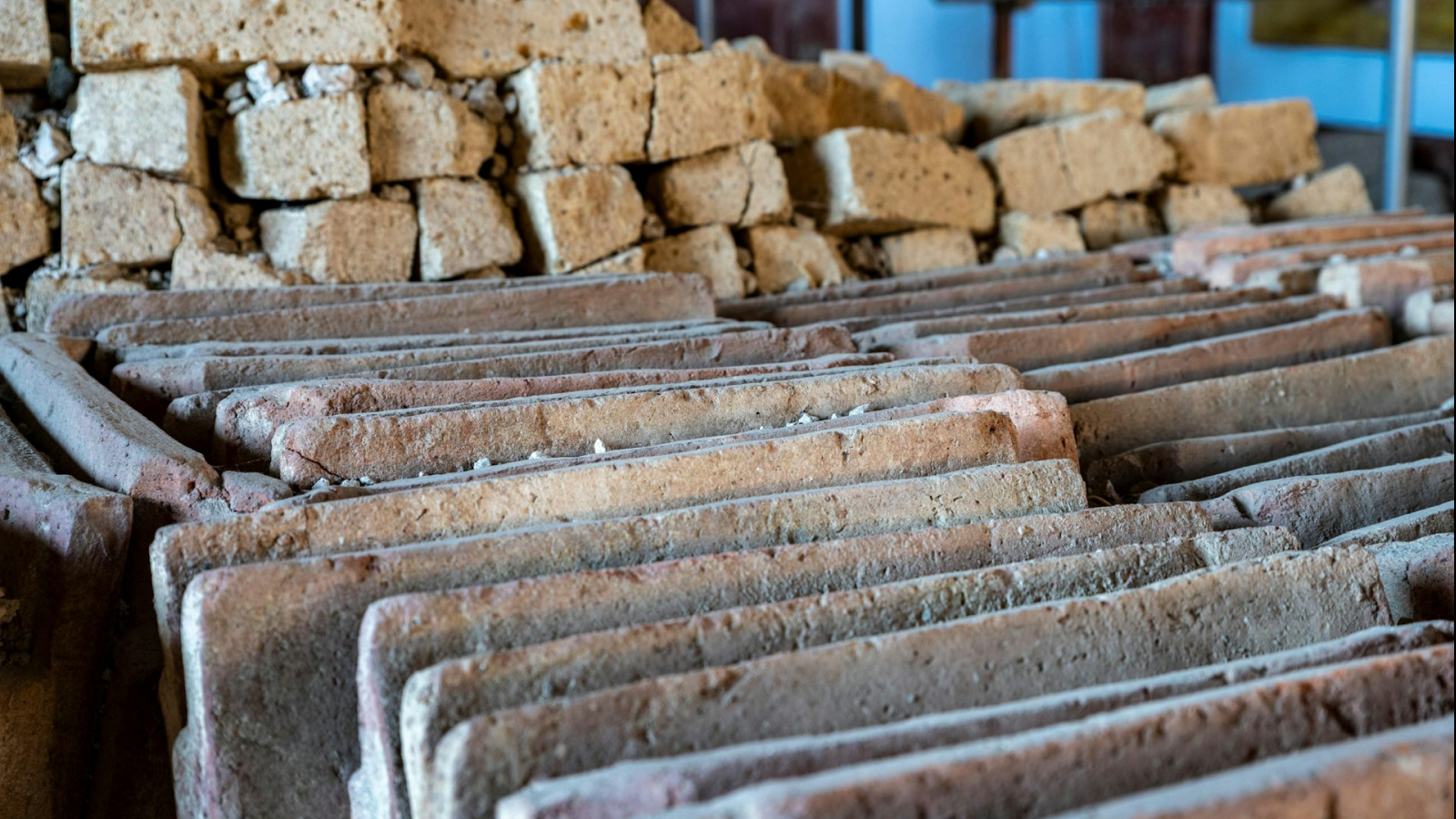Comet 3I/ATLAS has been transformed by billions of years of space radiation, James Webb Space Telescope observations reveal
The interstellar comet 3I/ATLAS has a thick irradiated crust that no longer resembles its home star system, simulations and James Webb Space Telescope observations have found.

Comet 3I/ATLAS is extremely irradiated from billions of years of cosmic ray bombardments, new research using observations from the James Webb Space Telescope (JWST) has revealed.
The comet has soaked up so many galactic cosmic rays during its interstellar journey through the Milky Way that it has developed a deep irradiated crust that no longer resembles the material of its home star system, the new research hints.
Using JWST observations and computer simulations, researchers have determined that the comet's previously documented "extreme" levels of carbon dioxide (CO2) enrichment are from space radiation absorbed over its estimated 7-billion-year lifespan, according to the study posted to the preprint server arXiv on Friday (Oct. 31). The findings have not yet been peer reviewed.
Galactic cosmic rays — a kind of space radiation made up of high-energy particles from outside of the solar system — strike carbon monoxide (CO) in space to convert it to carbon dioxide (CO2). In our solar system, the heliosphere — the enormous bubble of radiation emitted by the sun — shields Earth and its neighbors from a majority of this cosmic radiation. But in interstellar space, where 3I/ATLAS has spent most of its life, no such protection exists.
The authors of the new study concluded that over billions of years, cosmic rays have significantly altered the physical state of comet 3I/ATLAS' ice, down to a depth of about 50 to 65 feet (15 to 20 meters).
"It's very slow, but over billions of years, it's a very strong effect," study lead author Romain Maggiolo, a research scientist at the Royal Belgian Institute for Space Aeronomy, told Live Science.
The findings, which the researchers described as a "paradigm shift" for studying interstellar objects, suggest that objects like comet 3I/ATLAS are primarily made up of galactic cosmic ray-processed material rather than pristine material that is representative of the environments in which they formed.
Get the world’s most fascinating discoveries delivered straight to your inbox.
In other words, comet 3I/ATLAS is now a product of its interstellar journey rather than where it came from — at least on the outside.
Tracking the interstellar visitor
Comet 3I/ATLAS is currently flying around the sun. The comet reached perihelion (its closest point to our star) on Thursday (Oct. 29). Comets heat up as they draw closer to stars, causing ices on their surface to sublimate into gas. The new findings suggest that before perihelion, any gases ejected from the comet were merely from its irradiated outer shell. This is likely to continue post-perihelion, but Maggiolo noted that while it's unlikely, solar erosion might be strong enough to expose the pristine materials from the comet’s home star that are locked away in its nucleus.
"It will be very interesting to compare observations before perihelion, so the first observation we had when it arrived in the solar system, with observations made after perihelion when there was some erosion," Maggiolo said. "Maybe by looking at these differences, we can have some indication about its initial composition."
Since its discovery in July, researchers have been using various telescopes to learn all they can about 3I/ATLAS. Their findings so far indicate that the comet is zooming through our solar system at speeds in excess of 130,000 mph (210,000 km/h) in an unusually flat and straight trajectory. 3I/ATLAS could also be the oldest comet ever seen, with one study suggesting it's around 3 billion years older than our 4.6 billion-year-old solar system.

The new research builds on a previous work that documented comet 3I/ATLAS is rich in CO2, based on JWST's first images of the interstellar visitor in August, and observations from NASA's SPHEREx orbiter, also made in August.
Maggiolo and his colleagues had been studying the irradiation of a domestic comet (comet 67P), which passes between the orbits of Jupiter and Earth, and adapted their models from a 2020 study published in The Astrophysical Journal Letters to apply to comet 3I/ATLAS.
The team modeled the cumulative effects of galactic cosmic ray exposure on both ice structure and chemical composition after 1 billion years of irradiation. The method relies on laboratory experiments that simulated the effects of galactic cosmic rays, and thus might not be completely representative of interstellar conditions. Nonetheless, the tests offer a robust indicator of what comets experience on their lonely, multibillion-year journeys through interstellar space, according to the study.
The simulations found that 1 billion years of irradiation was sufficient for comet 3I/ATLAS to form its deep irradiated crust. Maggiolo noted that comet 3I/ATLAS is still full of interesting information, but it has aged and changed, which researchers will need to take into account during their analyses.
"We have to be careful and take into account aging processes, so it's more work for scientists, but [3I/ATLAS] remains very interesting," Maggiolo said.

Patrick Pester is the trending news writer at Live Science. His work has appeared on other science websites, such as BBC Science Focus and Scientific American. Patrick retrained as a journalist after spending his early career working in zoos and wildlife conservation. He was awarded the Master's Excellence Scholarship to study at Cardiff University where he completed a master's degree in international journalism. He also has a second master's degree in biodiversity, evolution and conservation in action from Middlesex University London. When he isn't writing news, Patrick investigates the sale of human remains.
You must confirm your public display name before commenting
Please logout and then login again, you will then be prompted to enter your display name.


